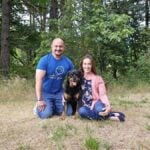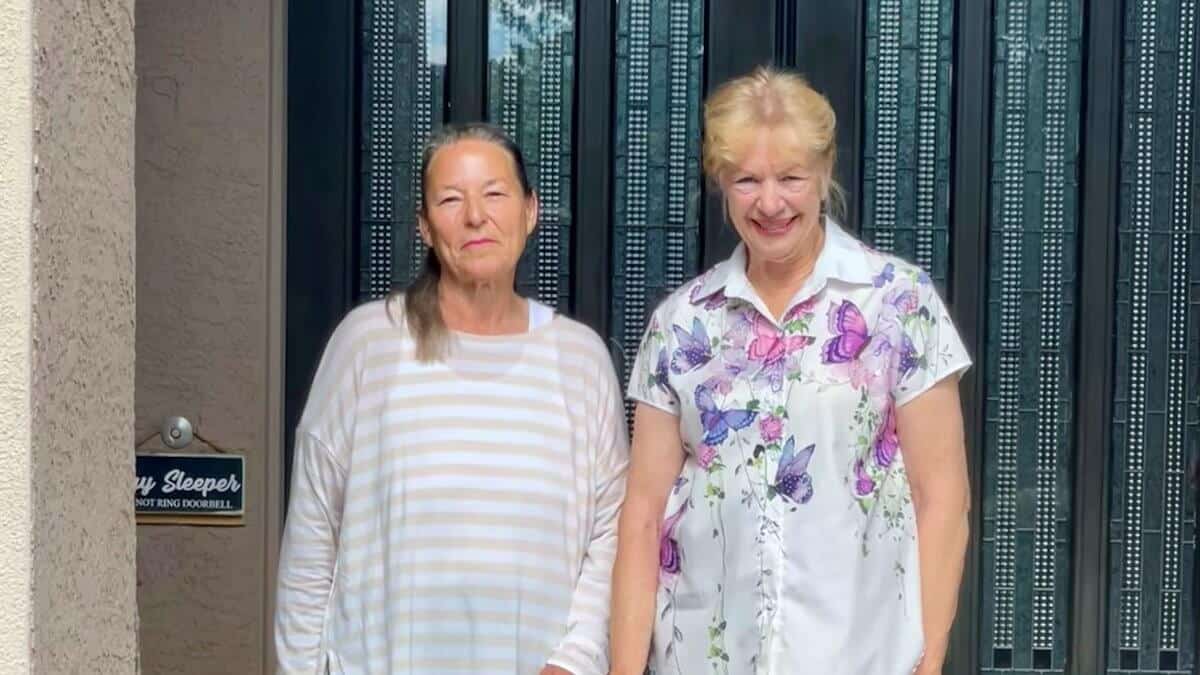


Home » Vickie Stansberry & Marlene “Marlo” Keene | Marlo’s Rottweilers

Featured photo: Vickie Stansberry & “Marlo” Marlene Keene with “Marco,” Westminster BOB Multi RBIS Multi Group-Winning BISS BOSS V GCHS CH Marlo’s BR Don Juan De Marco ATT
Vickie Stansberry & Marlene “Marlo” Keene
1. Hello, I am Marlene Keene. I reside in Elk Grove, California, with my partner of 28 years, Vickie Stansberry, and our family of Rottweilers. We met through our dogs at an AKC Conformation dog show. I have been with the Rottweiler for 48 years, since 1976, under my kennel name of Marlo’s Rottweilers.
I have bred multiple champions and working-titled dogs. In my youth, my favorite class to exhibit my dogs was from the Bred-By Exhibitor class.
2. In selecting a puppy for showing or working, my first priority is breed type. I pay special attention to temperament while looking for an outgoing, curious, and willing to please puppy. We have our hands and eyes on each puppy 24/7 from birth until they depart for their new homes. At age six to eight weeks, we evaluate their breed type, temperament, construction, bites, and movement while noting their interactions with littermates/people. We temperament test our puppies at seven weeks of age.
Having a good “eye” for breed type is a gift, but this can be developed with experience. Having knowledge of correct structure comes from being an educated student of the Breed Standard, which is our recipe for success when breeding and evaluating our Rottweilers.
We have knowledge of our pedigrees, which is important when breeding. We feel it is our responsibility as breeders to research the phenotype, genotype, and health clearances of our breeding stock. We also seek out the opinions of knowledgeable dog fanciers in our breed when choosing “show potential” puppies.
Our success in our breeding program is placing the “right” puppy into the “right” home. Our priority homes are responsible family homes, and through the years in our puppy placements we have formed many lasting friendships.
3. I see “soup to nuts” out there, with many dogs that are incorrect in their proportions and structure. The Rottweiler is a Working breed where “form follows function.” It is important to remember to become a breeder of worth. One must love the breed more than their own personal dog. The survival of our breed will be through communication and education.
The survival of our breed will be through communication and education.
4. I feel today’s judges are becoming better informed about our Breed Standard through mentors and educational seminars. However, I would like to see additional education regarding the original purpose and character of each Working breed. This will benefit the judges in their evaluation and examination.
5. As a breeder/exhibitor, dog shows are a great getaway to be with my dog. Social media can be a positive follow up to shed a positive light on our breed by providing an open forum for breeders and fanciers to discuss “food for thought” on such topics as exhibitions, breeding, history, health, nutrition, ownership, and sportsmanship.
6. I think two of the biggest challenges facing our dog show community are the economy and a lack of interest by our youth. We need more hard-working, reputable, committed breeders to preserve the integrity of our breed, and more dog show fanciers to preserve the exhibition of our purebred dog sports.
7. With the addition of the NOHS entries by AKC, the Owner-Handler has taken the lead in promoting good sportsmanship and has helped to boost the declining entries.